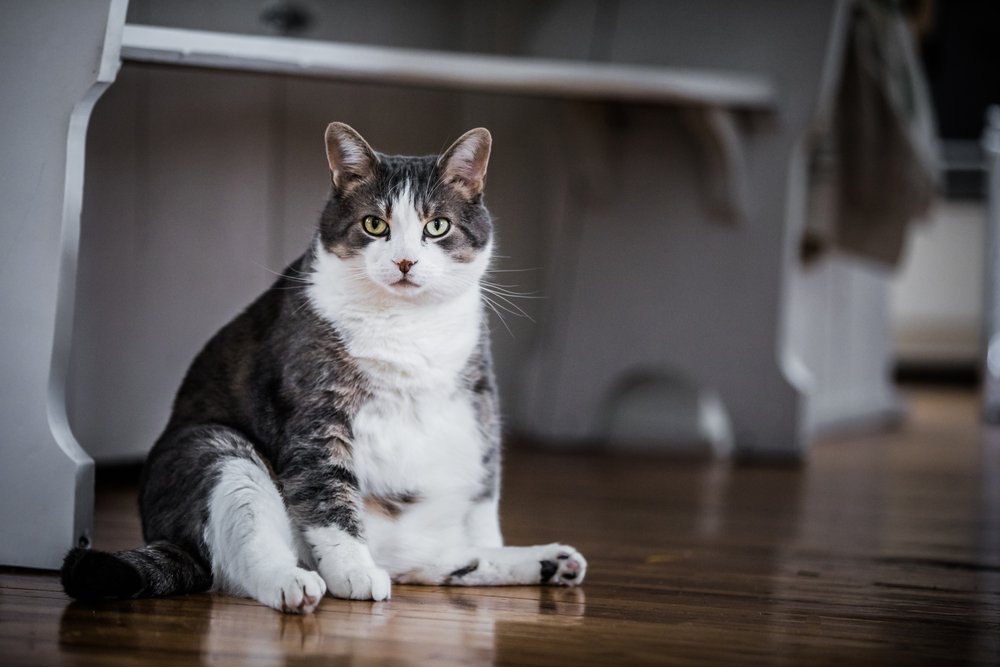Most pet owners feel that their furry companions are as a big a part of their family as anyone human member. These all-important companions can struggle with issues of weight and other health issues, which can directly affect their lifespan and health. Before taking on the care of a cat or other pet, it is critical to know how to prevent such weight issues. Exactly when to be concerned that even your best care isn’t managing the weight to the right levels, and seeking help and other ideas for managing this important part of your feline’s health will be crucial to ensure a long, happy relationship between you and your feline companion.
Table of Contents
Why Worry about Your Cats Weight?
Interestingly when you read about overweight concerns in cats, it is staggering to see the numbers of felines impacted. Veterinarians report numbers as high as fifty percent of their feline patients being outside recommended weight limits for their size and breed. Like humans, the first issue that overweight cats can experience is limited mobility, which can cause additional concerns for the feline long-term if not immediately addressed. Unhealthy weight can add to ligaments, muscles, joints, bones, and other bodily organs, which poses extreme dangers to your feline if not addressed. Much like humans, heart disease, high blood pressure, and diabetes can lead to life-threatening concerns and impact cats when their weight cannot be controlled.
Due to the cat’s small body size, added fat deposits around the stomach could impinge on the lungs’ ability to function. Urinary tract infections and decreased immune responses can cause constipation and flatulance and lead to certain types of cancer. As a cat becomes unhealthier, activity levels decline and can multiple these concerns. Due to these impacts on critical body organs, it must be noted that many times needed surgical interventions can additionally be rendered impossible due to these weight-related issues and shorten the life of your beloved feline.
When is a Cat considered Obese?
Like most cats, dogs, and other pets, a standard weight chart by breed and body type is available online and in a veterinarian’s office. These charts will be what health care professionals will use to access your feline’s current weight ideal during any checkups. Cat’s in the ten to twenty percent higher than body range ideal is considered overweight, and interventions will be recommended to get them down to a healthier weight.
Cat’s over twenty percent of their body ideal are considered obese and immediate interventions and plans should be made with your veterinarian to ensure that you can prevent health concerns from starting. If already in this range and they begin to experience blood pressure, various diseases and decreased mobility concerns, this will become quite serious quickly and should be addressed immediately. It can be a challenge to understand what a good weight is so many pictures of the feline’s in media and advertising picture felines qualify for obesity ranges. Nothing but the word a professional must be used as the final word on a cat’s health; remember, this is their very lives we are speaking of here that could be impacted.
Have a Plan to Help Your Cat Lose Weight
Before you even get your cat, you should be aware that keeping them in tip-top condition will fall to you. This is a big responsibility that should not be taken lightly when accepting the role of cat parent and all the needed food, activity, and other functions to go along with this new function. Cats by nature can sleep up to fifteen hours a day, which lends itself to them getting overweight without the proper nutrition. Seeking recommendations on food and the proper proportions from the very first day in your care is critical. Not overfeeding them is important, and most veterinarians will recommend measured and carefully scheduled feedings. Not leaving the kibble out for them to nibble on throughout the day is a good habit to get in from the very first feeding. Proper proportions, given in measured doses, are important to know exactly how much your pet feline consumes and adjust as needed.
In addition to proper nutrition, getting exercise might require a bit of ingenuity on your part. Filling toys with catnip, hiding their favorite play things to force them to hunt about a bit is a good way to ensure your pet has the right amount of exercise. Additionally, cat food puzzles where they need even to search out their food during feeding times can cause them to exercise without meaning to as they try to get to eh food they love. Cat shelves, bag obstacle courses, and anything else you can think of to engage your feline companion actively go a long way. Toys and creative options to keep them bounding, jumping, and playing will complement their regimented food to ensure the best nutrition possible.
Check-Ups Best Detection
Just as with any new pet, ensuring you have a trusted veterinarian that knows your cat from day one is important. Much like pediatricians for kids that benchmark milestones, a veterinarian helps ensure that bloodwork, feeding habits, and exercise are carefully monitored. Together you can build the best program to prevent obesity and other concerns in your new pet, and they will be the best tool you have when obstacles arise.
Should all your methods of treating Fluffy for overweight concerns fail, a veterinarian is also there to ensure any underlying issues are found? Always trust this valuable source of information and be sure when engaging with your pet, you don’t hold information back. Maybe you were on vacation and weren’t able to engage your feline as much, that is fixable. Changes in sleep, activity, and eating can signal to their veterinarian other underlying issues that you can correct before more extreme measures are needed.
More Extreme Measures
When obesity is diagnosed as a problem in your feline, it will be time for more extreme measures that will need immediate attention. Remember the severity of health concerns that could occur if you can not get them to an ideal weight, and follow every recommendation to the letter. More regimented feeding proportions might be needed, or even changing the food they are given.
Today, there are foods on the market developed specifically for overweight cats to help curb appetite and help regulate metabolisms. Please remember that just constricting your cat’s food without proper guidance could cause malnourishment and not address the cat’s nutritional needs. There might be an imbalance that needs regulating, and cutting their food must only be done under the strictest of veterinarian supervision.
Just as someone on a diet must do check-ins and monitor progress during a weight-loss period, this same rule of thumb applies for a feline working to regulate their weight. More regular scheduled appointments for weight and other workups might be needed. Some owners have had to weigh-ins every other week or more to ensure that even tiny milestones or setbacks can be addressed. Remember that this could be your cat’s life hanging in the balance, and it must be taken seriously and the most extreme measures implemented and regulated to get them back to a healthy weight.
Outside the Box Ideas
Get creative in helping your cat lose weight or staying active for the maintenance of healthy weight goals. Whether taking to kitty daycare to run free with other felines, rotating toys, or craft ideas around the house to keep them engaged – the sky is the limit on how you can engage your feline for more activity. Everything a veterinarian can give in the way of nutrition and medical advice only goes so far – activity, a sense of happiness, and engagement will be critical to your feline’s health. Remember that every feline is unique, and what will keep one happy and moving about may not be the same for the next. You are the most important ingredient in ensuring your feline’s happiness, activity levels, and health.
From the first moment, you bring data into your house, have a plan. From what food you will feed, the recommended schedule and proper proportions will be important to keep them in tip-top condition. Unique toys, climbing items, and other engagement activities must be part of your care plan for your feline. By nature, they are a bit on the lazy side, and many times, if given a choice sleep, will be their favorite activity. To fight obesity in your feline and ensure a long, happy life – you must find what ignites them to fight, play and get active! You can beat the odds with a little ingenuity on your part and stay tuned into it. If an overweight diagnosis does occur despite all your hard work, work with your veterinarian to develop a comeback plan. After ascertaining no additional health underlining concerns, a new food, activity, and treatment plan will be implemented. Remember, you are the absolute most central part of your pet’s health plan – ensuring that recommendations are followed to the letter will ensure that your feline is around to entertain and cuddle you for years to come.

Jonathon Hyjek is an entrepreneur and cat-lover. He is married to Joy and they share their home with their 2 feline-friends, Franklin & Ollie. Jonathon is a self-admitted “Crazy Cat Guy”. He started this website because of his love for his own cats and their well-being.

